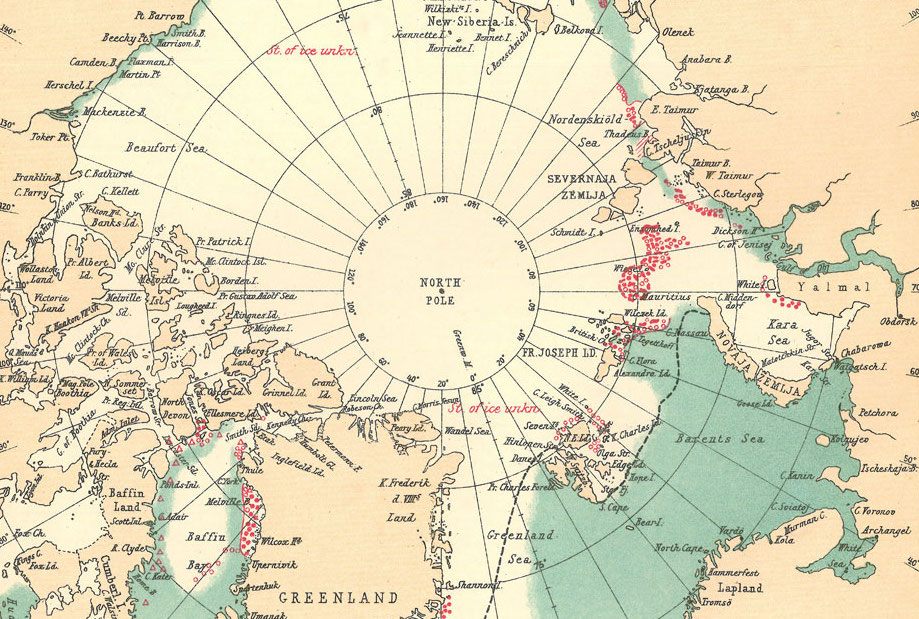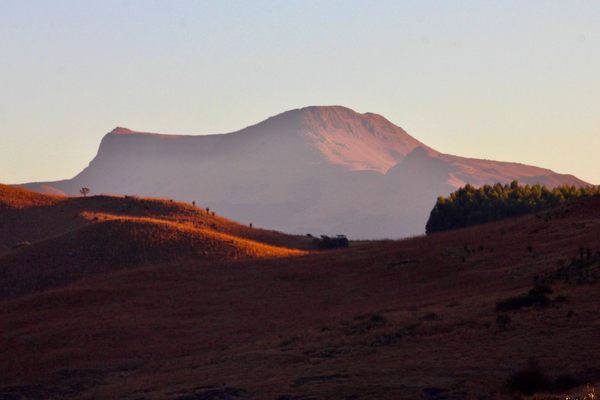The First Observations of Sea Ice Came From 8th-Century Irish Monks in Iceland
They were actually searching for God.

One of the charts that the National Snow and Ice Data Center produces shows the area of the Earth’s surface that is covered in sea ice over the course of the year, and for the past few months, the line showing the current amount of sea ice area has dribbled far below the line for every other year since 1978. The extent of sea ice on this planet is at a record low, certainly for the past 38 years and possibly for more than a millennium.
There is, right now (as of Jan 12th), the least area of sea ice on our planet that we’ve ever measured—probably the lowest in millennia. pic.twitter.com/6LrUKxBEOF
— Eric Holthaus (@EricHolthaus) January 14, 2017
Even before Greek and Roman geographers had evidence that sea ice existed, they guessed that the ocean to the north of Europe must be frozen. They understood enough about the shape of the world and the way it worked that they could guess—travel towards a pole, and the air would grow colder. The sea might freeze. One geographer traveled in 300 B.C. north of Britain for six days, until he reached what may have been a barrier of sea ice. He described it as “the sea-lung,” where the earth and sky became one, and reported he could go no further.
The first known written record of sea ice doesn’t come until hundreds of years later. The first observers of Arctic sea ice to have their discovery recorded for posterity were not sailors or explorers, but Gaelic monks who had sailed from their own Irish island out into the ocean.
Christianity came to Ireland early in the 5th century: records show that a man called Palladius was sent to the island in 431 to be bishop to the Irish people, and St. Patrick is supposed to have shown up around the same time. By the 600s, monasteries had become thriving centers of learning and art; the beautiful Book of Kells was made in one around 800.
But not all of these early Irish monks were content to stay cloistered in these increasingly powerful institutions. Some chose to live in more isolated places, like the monastery on Skellig Michael. They sought instead a wilderness, some sort of desert where they could seek God. From a lush island, the ocean was the most obvious place to go.
There’s not much evidence left of the journeys of these monastic explorers, but in later years Norse stories had a name from them, the papar. Gaelic monks settled on empty northern islands—Orkney, Shetland—but it’s also possible that they found their way to Iceland, where manmade caves, decorated with crosses, have convinced some archaeologists that there were settlers here before the Vikings.
An early Irish geographer, Dicuil, also writes of “priests who stayed on that island from the first of February to the first of August.” The year would have been 795, and Dicuil briefly notes a journey they took north. “These priests then sailed hence and, in day’s sail, did reach the frozen sea to the north.”

That brief mention is usually considered the first written record of Arctic sea ice. Iceland was settled more permanently in the 900s, and the people living there started keeping records of sea ice and icebergs that an Icelandic geographer later used to reconstruct sea ice records in the area going back to 1,000 A.D.
More systematic records of Arctic sea ice weren’t collected until about a millennium after Iceland was first settled. In the 1880s, the Danish Meteorological Institute started drawing up sea ice charts using reports from the shore and sea, from ships and scientific expeditions, as the National Snow & Ice Data Center explains, and by the turn of the century, the institute was regularly publishing a report on “The State of the Ice in the Arctic Seas” that covered the whole Arctic.
Those charts were one of the best sources of records about Arctic sea ice, until the 1950s, when more reliable and variable data became available from ships and satellites. The record for Antarctic sea ice is spotty; shipping records and the logs of Antarctic explorers are the best sources of information. In 1978, satellites started collecting data on sea ice to create a continuous record, and that’s the data that shows that this year is the worst of those 38 for sea ice. But those satellites are aging, and there’s no guarantee they’ll be replaced. Without those satellite data, scientists will only know how the sea ice is faring by collecting observations from ships and intrepid travelers, like the ancient Irish monks.






















Follow us on Twitter to get the latest on the world's hidden wonders.
Like us on Facebook to get the latest on the world's hidden wonders.
Follow us on Twitter Like us on Facebook